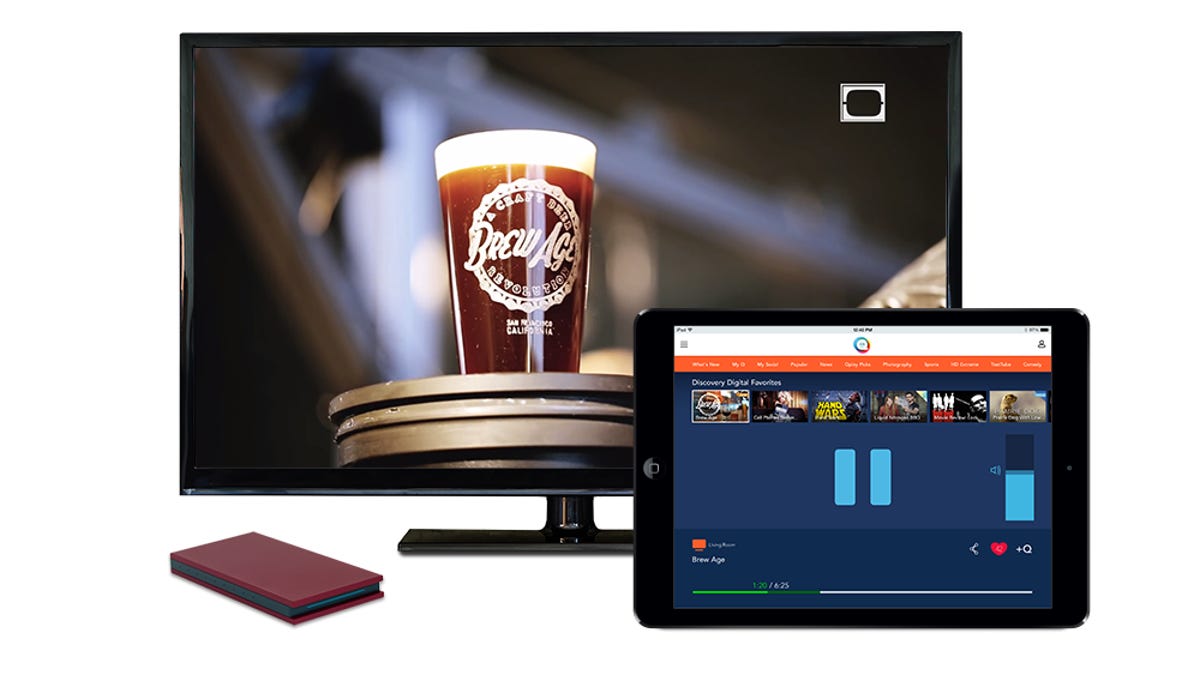TiVo co-founders launch $49 video streamer
Qplay's device and service will stream video playlists from the Internet onto your TV. But will it be enough to compete with the likes of Chromecast and Roku?

The folks who co-founded TiVo are unveiling their follow-up act: a streaming device and service that lets you create video playlists from across the Internet, play them on TV screens, and share them with others.
Michael Ramsay and Jim Barton, who unveiled TiVo 15 years ago though have since moved on, are trying a different twist on televised entertainment with Tuesday's launch of Qplay. The service enables users to stream ready-made playlists of online video focused on different topics, from sites such as YouTube, Vimeo, news organizations, Facebook, and Twitter to a television screen. Users can also build their own playlists and share them with other Qplay users.
The service comes in the form of an iPad app and adapter that plugs into an HDMI port on a TV. The videos don't come directly from the iPad but from a cloud operated by the company. Ramsay said that both an Android version and smartphone versions are coming. Notably missing at launch are support for premium content like Netflix and Hulu, though Ramsay also said that both will come to the service "soon."
The market for streaming video options is already competitive, with popular contenders like Roku and Google's Chromecast. At $49, Qplay is more expensive than Chromecast -- and the same price as cheaper Roku models. The adapter -- a bit smaller than of a deck of cards -- is larger than the pint-sized Chromecast, which is so small that it can be confused for a USB stick.
Qplay will face the challenge of convincing consumers to forgo big-name devices for a newcomer that seems less flexible, at least for now.
Ramsay said Qplay's draw is in its capabilities in personalization and the ease of which people can share videos and playlists. He mentioned one scenario in which someone could make a playlist for a specific movie that might include the movie itself (once those premium content deals come through), interviews with the actors, and behind-the-scenes extras. The user can then make the playlist available to other fans. One aspect that consumers might enjoy is that when you add a video to a playlist, you skip the pre-roll advertisement that would have played.
"It transforms short-form video into a long-form experience," Ramsay said.
You can do an awful lot of that with YouTube playlists and a Chromecast already, but Ramsay insists that culling content from a variety of sources other than YouTube is what sets Qplay apart. For its part, Ramsay said, the company discussed the possibility of partnering with Google to use the Chromecast as a way of beaming into TVs, but ditched the idea because the device didn't do enough to support Qplay's plans for playlists and setting up an environment where videos from different apps can intermingle.
Ramsay said that the company also has plans for premium services, such as watching live TV or implementing DVR capabilities, and or letting a user upload personal content straight to a queue. To that end, the company gives itself room to experiment with the business model in its terms of service. Right now, use of the service is free with the purchase of the $49 TV adapter, though the company said it reserves the right to charge for service in the future. Ramsay also said he'd like the adapter to eventually be bundled into the price of the service.
To be fair, Ramsay stressed that the launch will be in an "early adopter" phase. But, like the support for Netflix and Hulu that are for now sorely missing, users will have to wait and see how those other premium services will play into the Qplay ecosystem.

